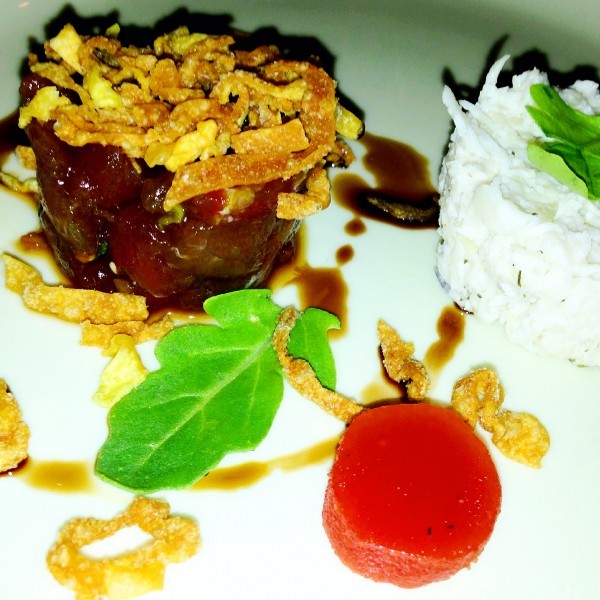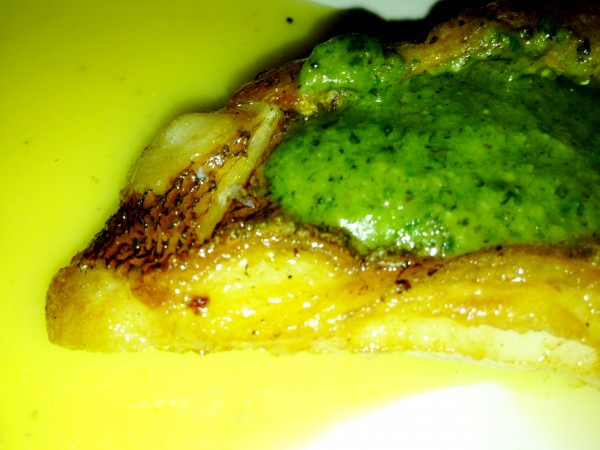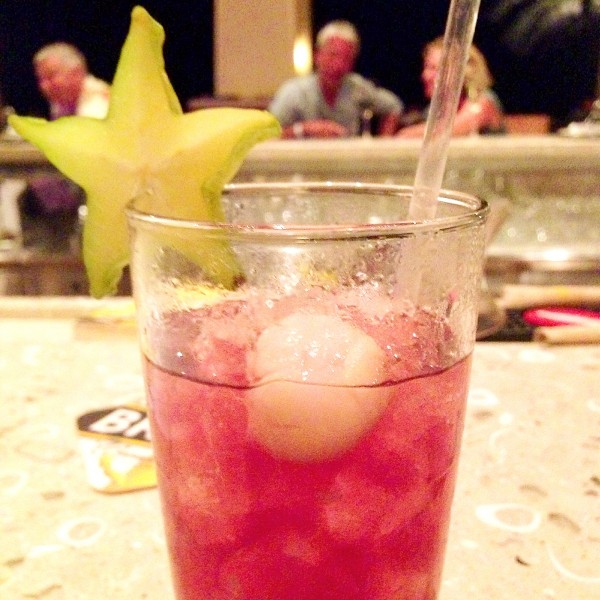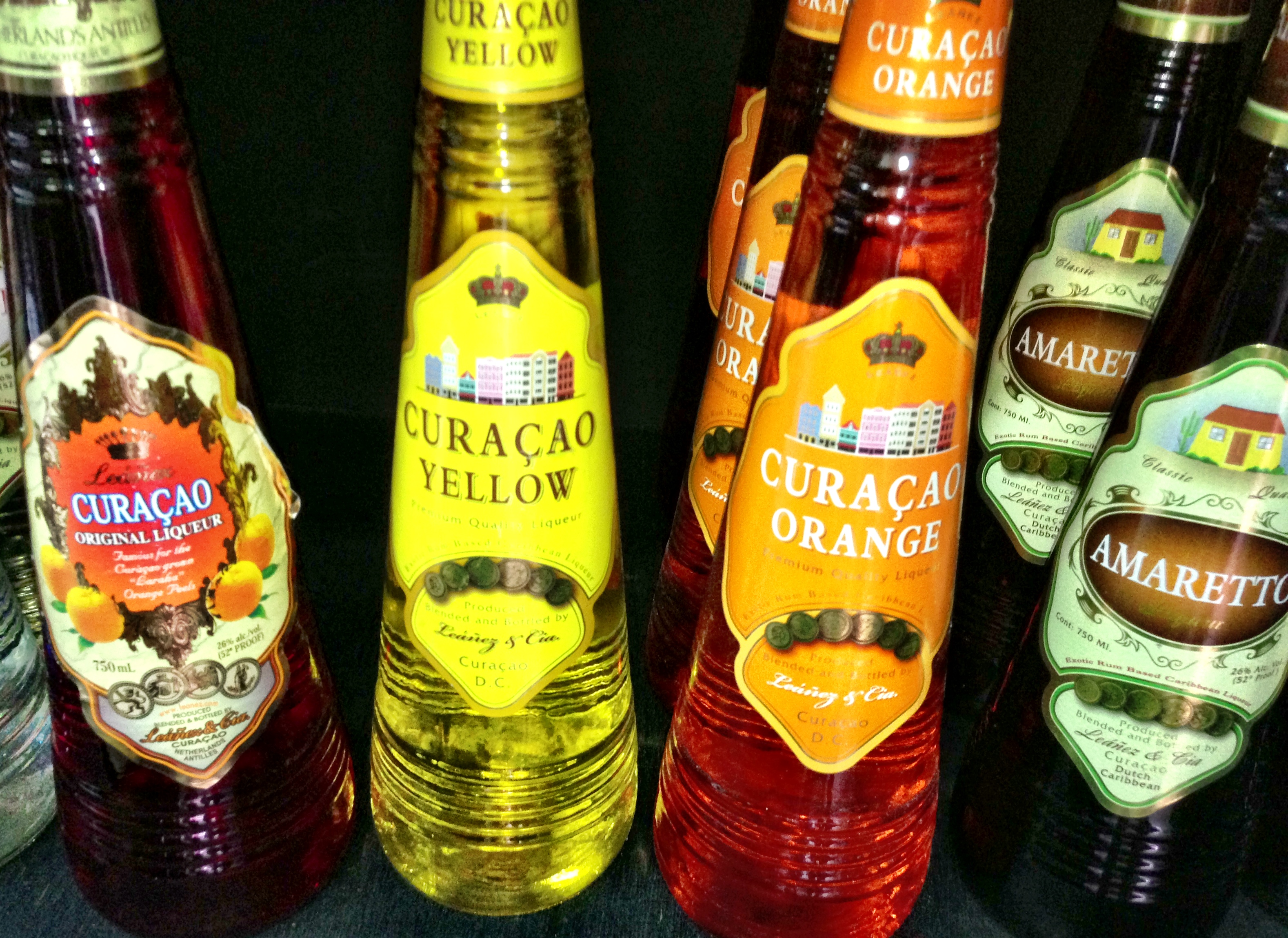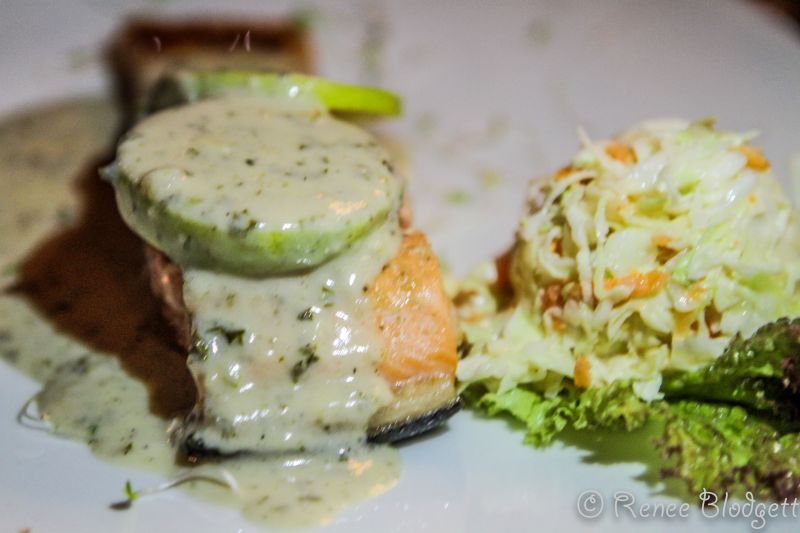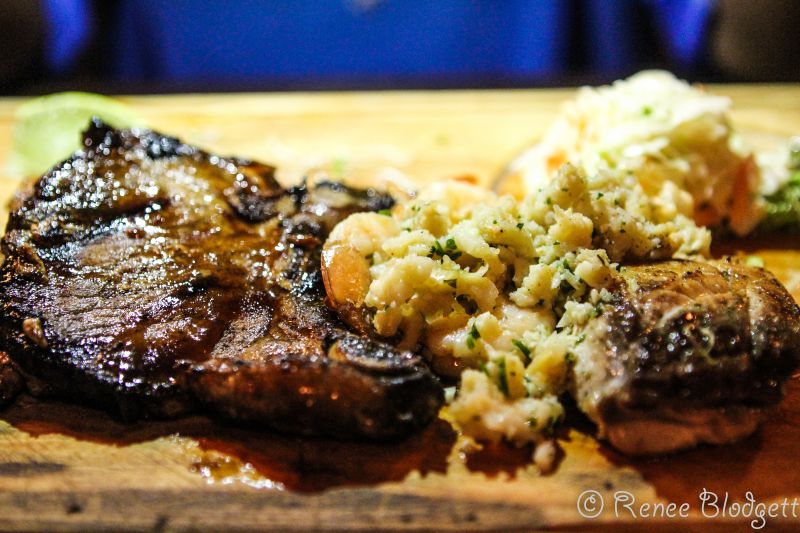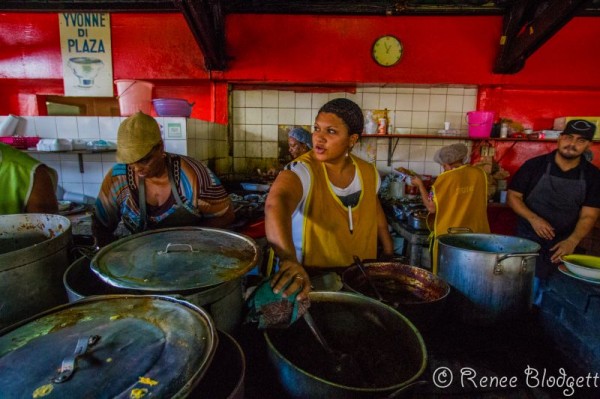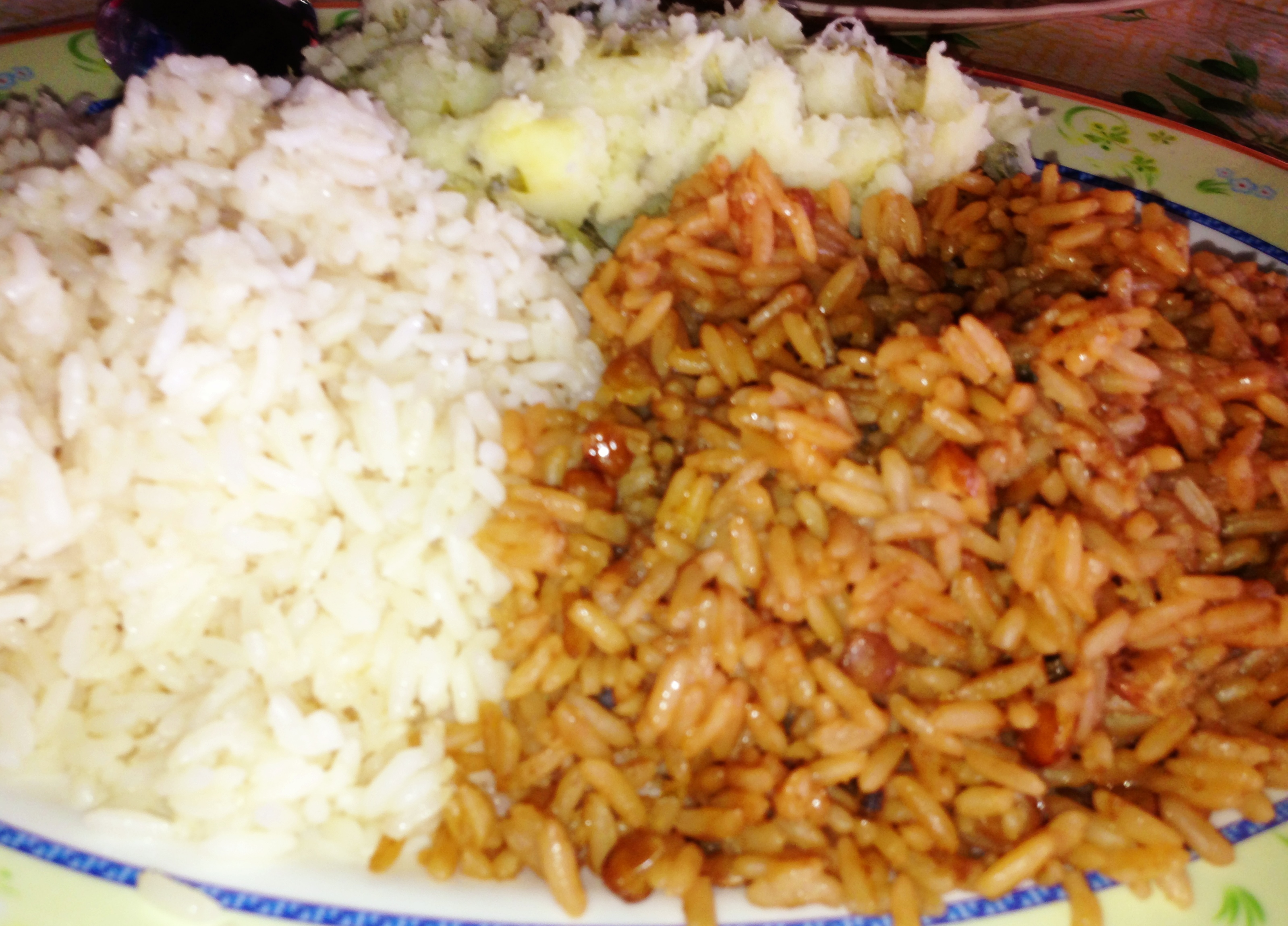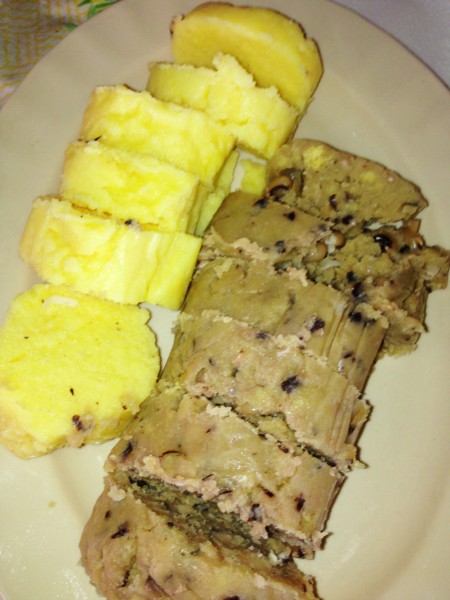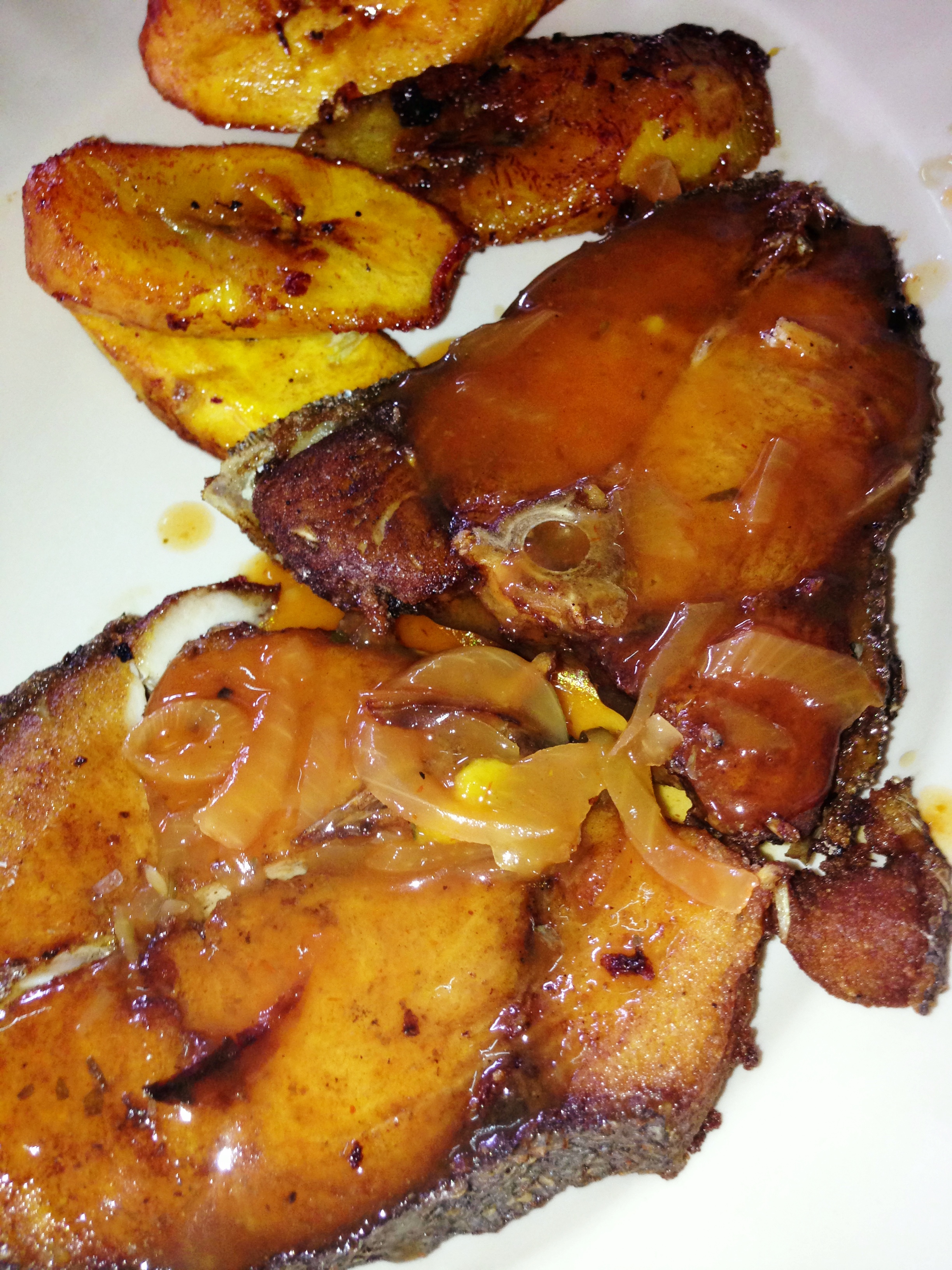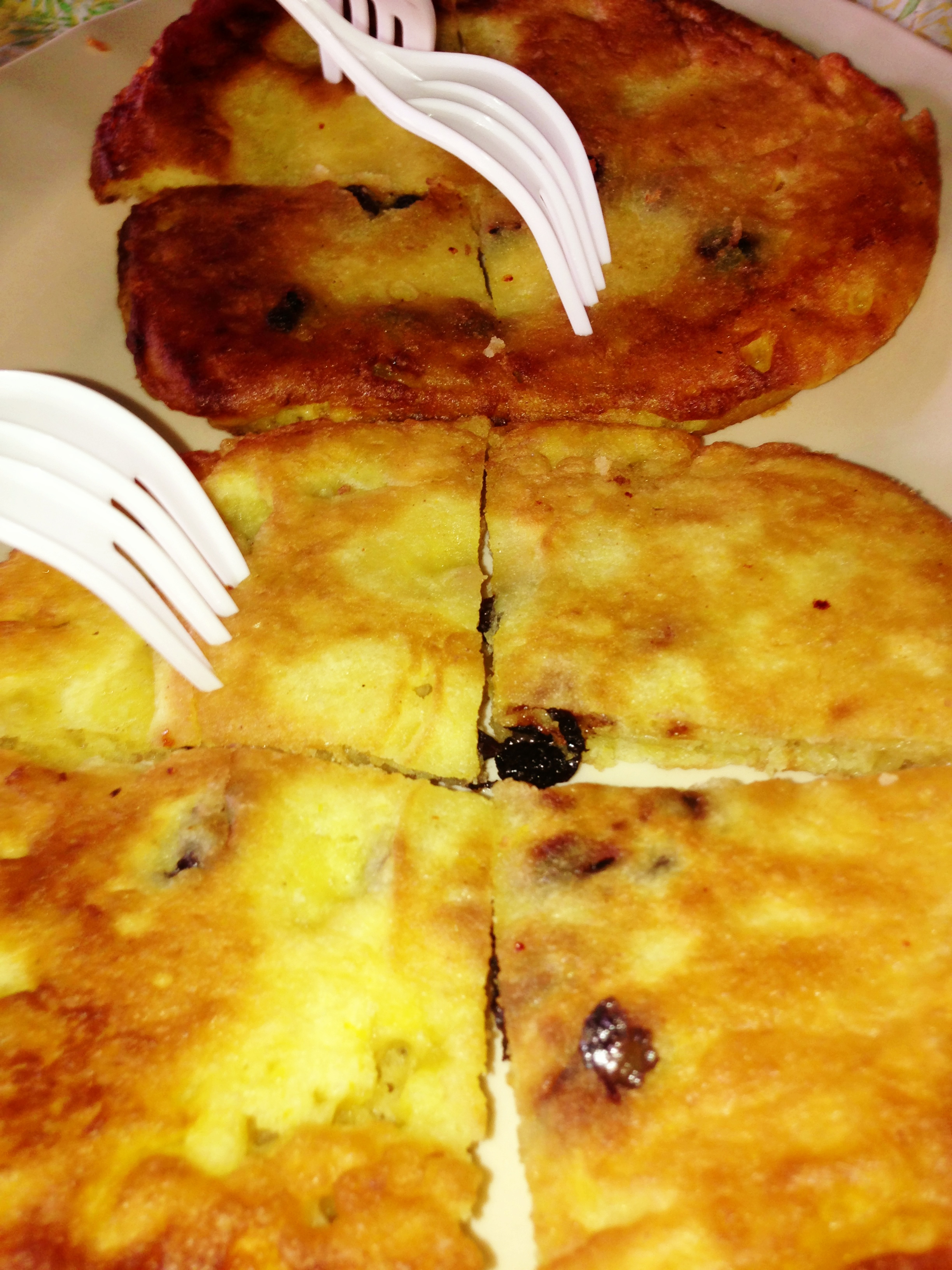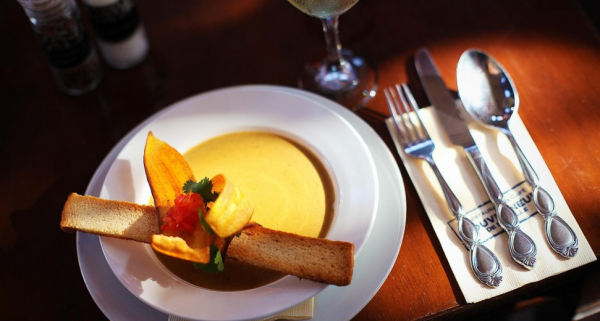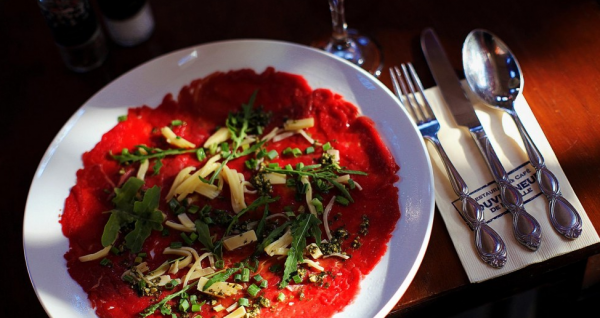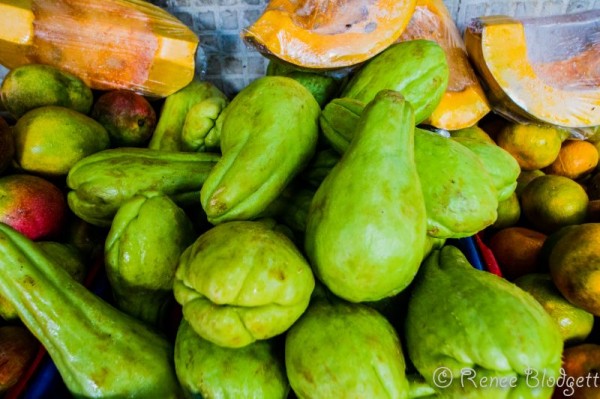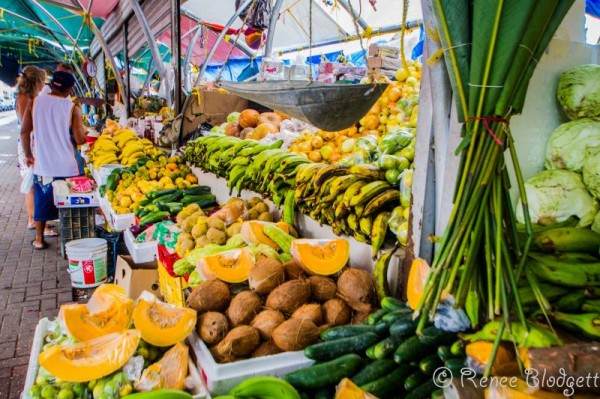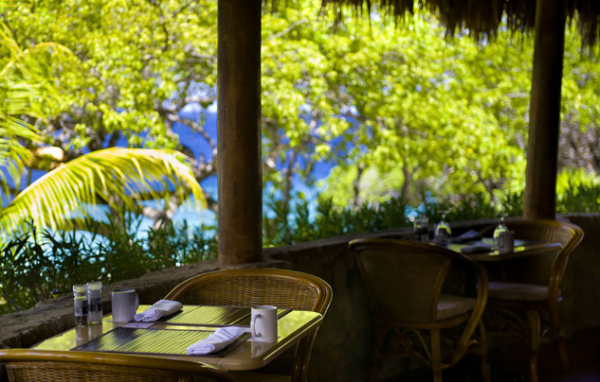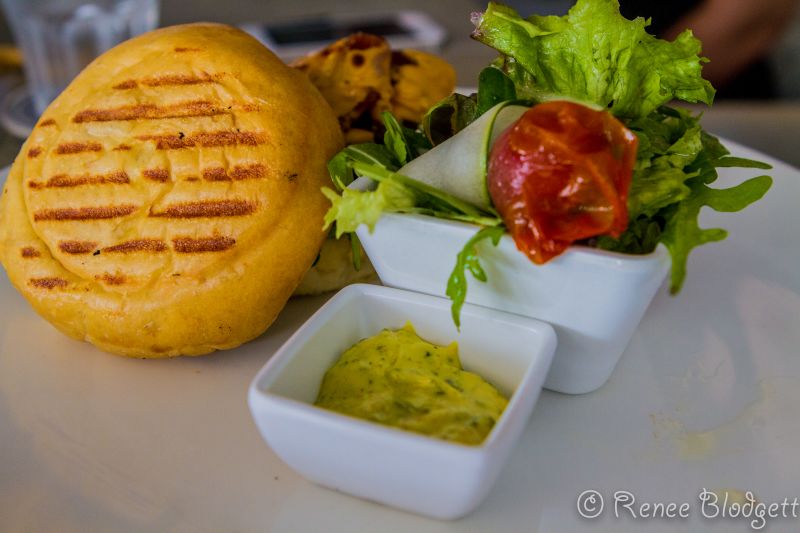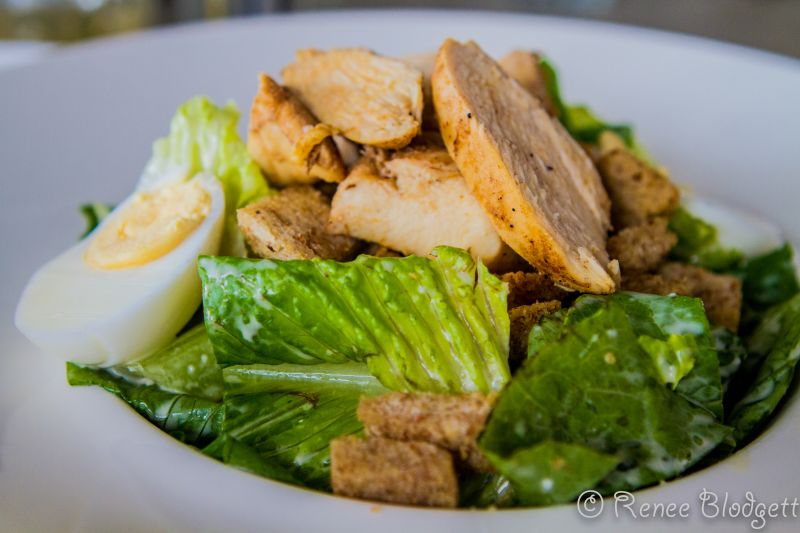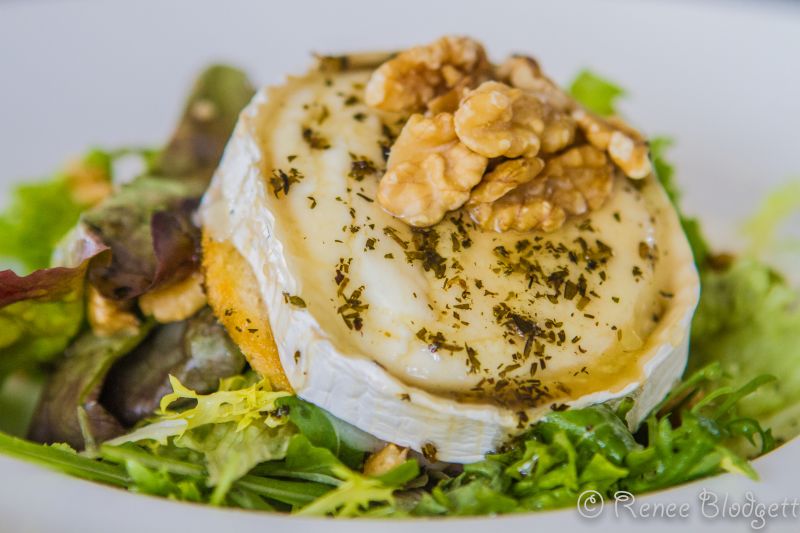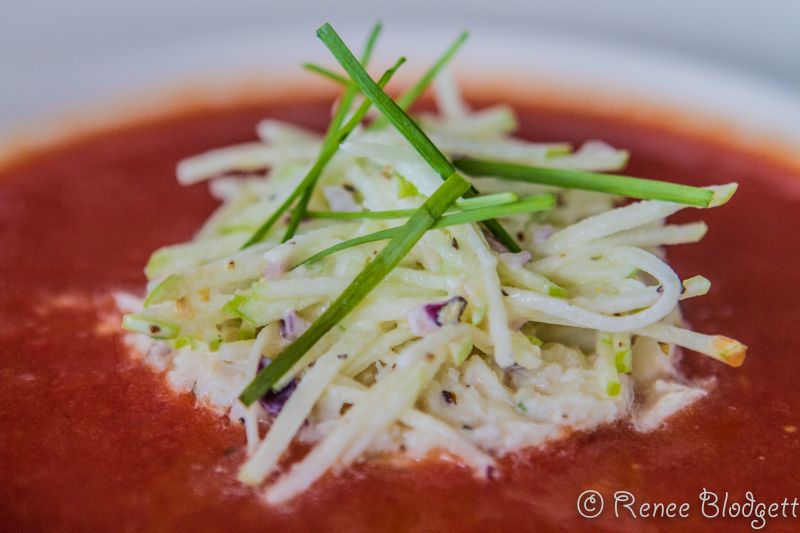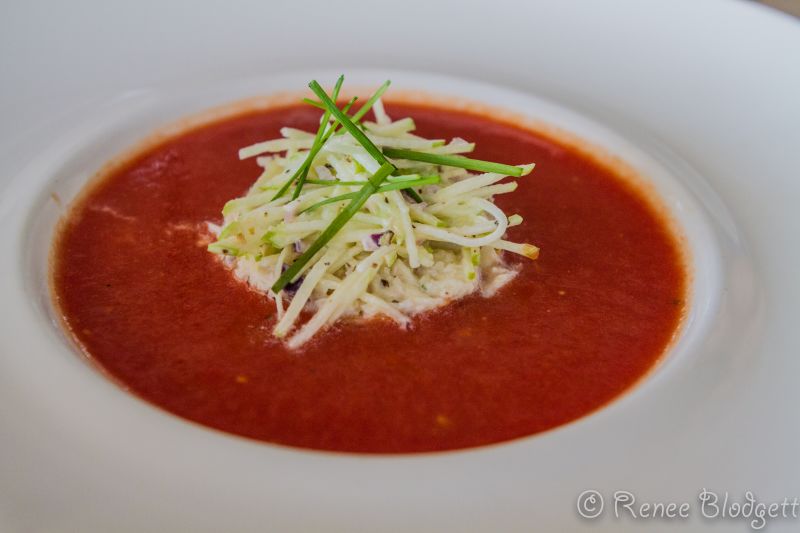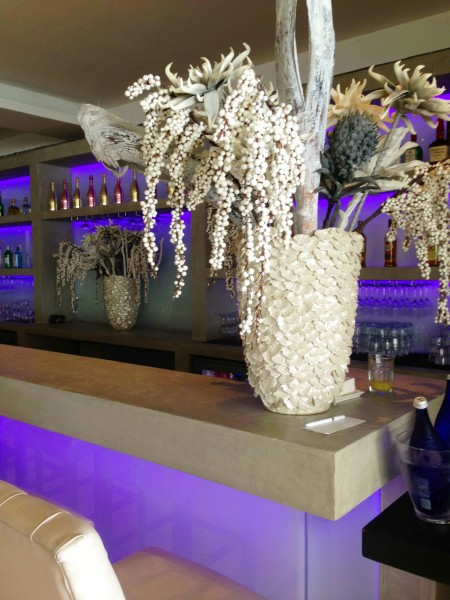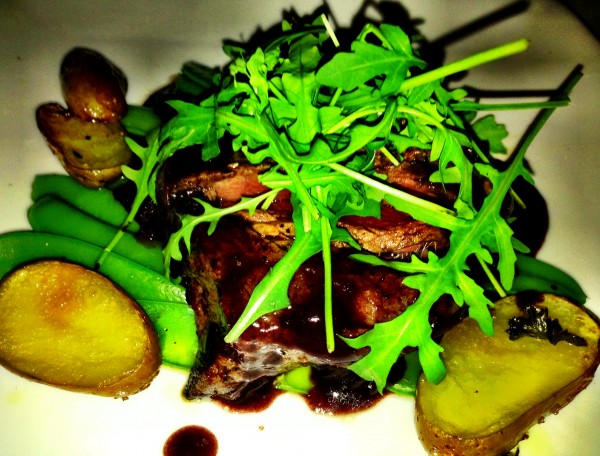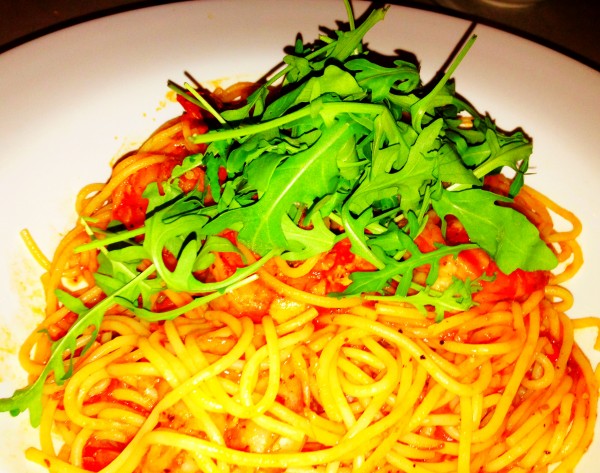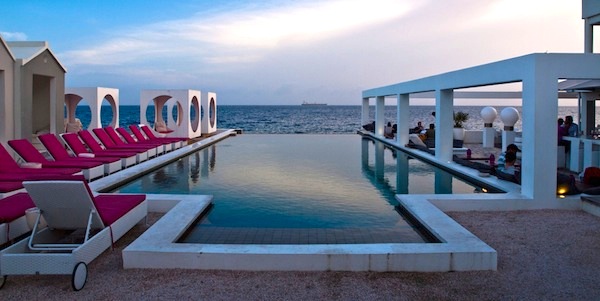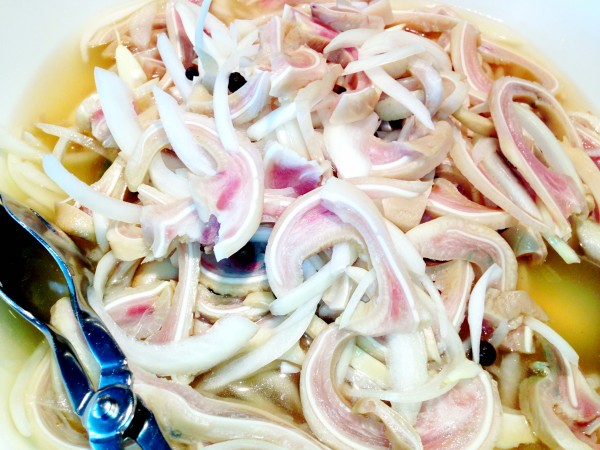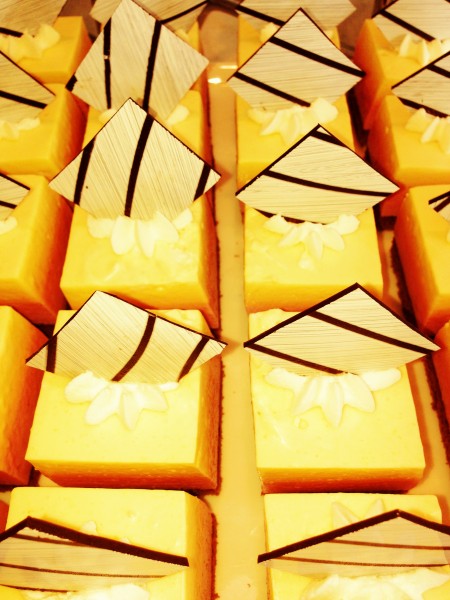Established in the 1970’s, Plasa Bieu is Curaçao’s traditional old market in Punda, a main meeting place where locals interact over Creole dishes in the island’s capital city Willemstad. It is the place I would learn about cactus soup and goat stew and watch locals prepare island delicacies for hours on end in massive sized pots on flaming hot grills.
It wasn’t the first place I began sampling Creole food however, nor was it last on the list before I left this charming little island boasting a rich cultural heritage, a deep history and to-die-for views from pristine beaches.
I started my culinary tour exploring restaurants throughout Curaçao and one gem not to be missed is Shore’s American Seafood Grill where Heinrich Hortencia is head chef. The restaurant is part of the Santa Barbara Resort, a 45 or so minute drive from Willemstad.
You may be thinking that this beautifully presented dish doesn’t look classically Creole to you and you may be right, although let’s remember that Curaçao is an island where most locals speak four languages, Dutch being one of the island’s two official languages, Papiamento being the other. Its a cultural-rich island which means that its culinary appetite is diverse, with an infusion of Dutch, Venezuelan, Afro-Caribbean, Portuguese, Spanish and other Caribbean influences.
You won’t leave unhappy after this trio of starters: tuni poki and crab — it was served with a small side Caesar salad (not pictured here). Since the resort and restaurant overlooks the ocean, there was no question I was going for the fish since I’m a fan of trying whatever fish happens to be fresh and in season at the time.
The below Red Snapper was locally caught and pan fried in a plantain creme and a pesto chutney. Yum!
For meat lovers who are curious how Chef Hortencia prepared the Beef Tenderloin, it was grilled with onion chutney in a red wine reduction.
They specialized in mixed drinks….as I felt a cold coming on not long after I arrived, I went for this dangerous little concoction, a spicy and hot vodka mixer, which worked like a charm and opened all of my senses.
While we’re talking spirits, nearly everyone knows about the infamous Blue Curacao, which is so commonly found throughout the world on bar menus. According to one of our local guides, Curacao liquor, which comes in a variety of flavors and colors — yellow, green, clear, blue and red — all have the same flavor.
I later discovered an Orange Curacao but didn’t have time to taste it. If you want to go sweeter however, there’s Rum, Coffee and Chocolate flavors as well to get you in the mood for dessert — or perhaps replace dessert.
The Grill King is a blend of western and Curacao influences and offers outside terrace seating, one of the big pluses of the restaurant. Located at Waterfortboogjes 2-3 in Willemstad, it’s an easy option for lunch or dinner if you’re staying in the capital.
We had a leisurely dinner at a table that was perched up against the wooden railing so we could see the eels swimming below us while we dined.
They’ve been around since 1987, so it’s also a popular place with locals. They offer seasonal menus and since there were a dozen of us, I was able to taste a few dishes….below their grilled salmon with a classic coleslaw and a dill sauce.
They offer a wide variety of steaks, so it’s worth giving one a try.
What’s nice about their menu is that you can mix things up, whether it’s a sample of different types of seafood or a combo of steak and seafood. Below you’ll see a variety of flavors, from deep fried clams to grilled calamari, salad, shrimp and mussels. It was one of the healthier and kinder-to-the-waistline options, though quite frankly it wasn’t what was on my mind at the time.
While Caribbean island cooking tends to be lighter than central Europe where everything seems to be accompanied by cheese and fries, they do use oils here, not just when they grill a piece of meat or fish, but in their stews. Let’s take a look at the other side of Curacao dining — the classic Old Market, otherwise known as Plasa Bieu, which I mentioned above.
The old market is a great place to go for lunch one day and I’d recommend going hungry. After lunch was over, I had time to ask questions and watch the girls prepare the food, learning what went in and what stayed out of those massive steel pots.
From stewed cucumber and steak with spinach mashed potatoes to fried red snapper with polenta and stewed goat meat, we tried it all. Goat is very popular on the island largely because there are so many of them running around. Goat stew is apparently where it’s at and our driver Larry smacked his lips on more than one occasion when he spoke of the goat stews he has had over the years.
Not in the above case which we had at the market, but sometimes goat stew or curried goat is served with a young gouda cheese on top – this is naturally from the Dutch influence. Note that at the market, most of these local dishes are only $5-6 a plate, so it’s worth ordering several and tasting a variety to get an idea of how broad the tastes are….
Also common on the island is roasted chicken with fried rice and stewed papaya with polenta. Popular side dishes include mashed potatoes with spinach (locals refer to this as warmoes), beans and rice, which seems to be served with everything and of course polenta (funchi).
Tutu is a common dish here with locals and can be served with brown corn meal, cinnamon and nutmeg — below it is served as a side dish with polenta. Tutu itself is ground up beans with sugar and sometimes they put pigs tail or cheese in it. (usually one of the younger Gouda cheeses). Its best on the side of a stew or fish dish.
Below is a grilled Mahi Mahi with local creole sauce (onions, picalilly sauce, which is made from little silver onions dipped in mustard sauce – yum!) and served with plantains and onions on top.
And, who “woulda thunk” that Pumpkin pancakes would be a “thing” on Curacao? It is one of the specialties on the island. My first pancake taste at the market? Chocolate chips of course. :-)
One of the things I didn’t have an opportunity to try at the market, is the infamous Eguana Soup, which you can also get as a stew. Also very traditional and a must try is Kadushi, which is a soup made from a cacti. How they first described it to me? “Well, it’s a bit like okra – very slimy, so not for everyone.” Hmmm, I thought. How could I NOT try this? Then again, I absolutely love okra and nearly lived on the stuff when I drove through Africa.
Then, there’s kashi yena, which is a traditional Curacao dish (chicken and veggie stew) and is served with Gouda on top. They also eat a lot of chicken and curry over rice, which isn’t surprising given its popularity in other Caribbean cultures as well.
Also worth noting is a great brunch find — Gouveneur de Rouville on De Rouvilleweg in Willemstad. The restaurant has incredible ambiance and views — you can sit inside or outside and they offer fresh fish specialties, as well as uniquely prepared soups, like banana soup (below) and below it, carpaccio. Delicious!
On my solo walk through town mid way through the trip, I discovered restaurants with Indonesian influence as well. One in particular where I stopped to ask questions, was serving Bami Goreng, a fried noodle dish served with chicken and Moksi Meti, which is roasted pork and chicken with green beans and rice.
Along Koningin Wilhelminiabrug, not far from old market you’ll come across the renowned Queen Emma bridge which lights up at night during the season. Nearby, I’d be remiss not to mention the Floating Market in Willemstad’s center, which runs along the river.
Vendors from Venezuela, a mere 40 or so miles away, pull up in vibrantly colored boats and sell the latest fruits and vegetables to locals, a tradition which has been happening for close to century. Below, I tried the chayota fruit which looks a bit like a small papaya in green.
It was something I had to do of course since I hadn’t tried it before – a bit tart but worth a taste, as are their fresh papayas, mangoes, watermelon and tamarind, which is a popular among locals. You can even get a tamarind shake from a local juice bar, which is set up as an outside stand near the river.
Giant sized banana leaves at the market.
I noticed that there are a lot of so called “Beach Clubs” on Curacao, all of which offer dining, usually open for both lunch and dinner. What’s great about the beach club restaurants is that you can often sit on the terrace, under a big open sky, far away from the prolific air conditioning found in nearly every inside establishment.
They typically offer a blend of Caribbean and European cuisine, ranging from soups and salads to curries and fresh grilled fish and steak. Three beach clubs and resorts worth mentioning are the Kura Hulanda Lodge & Beach Club, Papagayo Beach Club & Lounge Resort and the St. Tropez Ocean Club, all of which have exquisite food.
Kura Hulanda Lodge & Beach Club is located on the west side of the island and overlooks a secluded beach from a cliff-side position. The property is littered with caves and is incredibly relaxing, not to mention romantic, especially for an evening meal outside. You can dine under an expansive, open-aired, thatched roof hut while enjoying tropical cross breezes and sweeping views of the sea.
Think barbecue dinners, fresh grilled fish and steaks. They are notorious for weddings, anniversaries, and honeymoon getaways especially as it’s a little more remote than some of the properties in central Willemstad.
The Papagayo Beach Club & Lounge Resort is a stone’s throw from the well known Jan Thiel Beach, set in the upscale neighborhood that shares its name. My first thought as I walked around the corner to the open aired patio where we were slated to dine for lunch that day was….“hmmm, this is most definitely where the beautiful people in Curacao hang.”
While you’re dining, you face an inviting infinity pool and sandy beach with quick and easy ocean access within steps of the restaurant. The menu was also incredibly diverse and because we were 12, the dishes seemed like they’d never stop coming between appetizers and main courses. From burgers (first shot below), to soups and salads, the offerings were as healthy as you wanted or not….think deep fried fish.
I couldn’t resist a salad, especially on a hot sunny day — perfect with a margarita, a class of Sauvignon Blanc or an iced tea.
French influenced, they had Coquille St. Jacques on the menu, but served as a starter – notice how large the portion is, especially considering it is made with baked scallops, a compote of Cevenne onions, bresaolaham sugar and poultry gravy.
Another not so light, but delicious option is the goat cheese salad – they certainly don’t skimp on portions. It was served with honey and walnuts.
My favorite? The Gazpacho soup, which you don’t often see on menus. The chef served it with a variety of vegetables, crabmeat, apple and a garnisch (scallions on top). Yum!!
A variety of breads with spreads comes with the table.
This was a favorite despite the fact that it wasn’t classically local like the incredibly authentic experience we had at the market; it was however, incredibly relaxing, chic and offered a wide selection of dishes. What’s great about the island is that you can get both within minutes of each other.
Other dishes worth mentioning include their Grilled Seabass Filet with tempura prawns and crab broth, salmon filet fried on its skin with mackerel risotto, fennel, foyot sauce and spring onions with chorizo oil, baked duck breast with carrots, onion compote and roasted spinach, the Truffle risotto with Grana Padano cheese (in this case, a French influence), and a classic Bouillabaisse a la Marseille, a traditional fish soup with rouille.
For the diet conscious, they had an entire page dedicated to salads and many appetizers which were on the lighter side, such as the Caribbean Lobster Cocktail, Beef Carpaccio with garlic infused oil, tuna tataki with a sweet and sour oriental salad and red onion and the delicious Peruvian ceviche, which they marinate in ginger and lime.
Want chic on top of healthy dining? They have it. The inside bar is nothing short of trendy, hip and beautiful. My only regret was not meeting the designer who created the “just so perfect” ambiance.
Part II of the “Where Beautiful People Hang” dining, drinking and relaxing, brings us to the St. Tropez Ocean Club on Pietermaai 152 in Willemstad, where we had dinner on the last night.
We had a pre-fixe menu because of the size of our group so can’t speak to the diversity of their menu, except to note that in addition to classic steak and fish dishes, they offer tapas as well, which is a nice option when you want to sample several dishes over drinks. Most of us opted for the steak, which was served with sauteed potatoes, garlic and arugula salad.
St. Tropez is another trendy and all things “hip” place in downtown Punda, where you’ll find more Europeans than locals — the jazzy female singer was Dutch but the resort’s influence also has a little French and Italian thrown in. They seemed to put arugula on top of nearly every dish, a godsend for me who craves more greens than most restaurants traditionally serve regardless of where I am in the world.
They offer fresh fish and chicken dishes and also have lobster on the menu, all under the culinary magic of Chef Stefanus Onrust. It’s not just its name, but the oh so trendy bar even has that south of France feel to it.
The bar is well stocked with anything you could want, from whiskey, vodka, international and local liqueurs and of course wine. They want you to feel like a Jet Setter here and its bar scene, perfect lighting and its fabulous outside pool which has stunning views day or night is the biggest draw.
The Renaissance Hotel Dining Room is on the other side of the spectrum, largely because it’s centrally located, the focus is more on inside dining than out, although they do have a casual patio and it caters to families. I noticed many families throughout the property, which seems spot on given its amenities on-site, not to mention a Starbucks and infinity pool on the top floor which extends into the ocean.
Given its western influences, the hotel and restaurant seems like a perfect option for those who want comfort and familiarity while being in a beautiful Curacao island setting. Swimming and tanning are on the premises adjacent to an outside bar with an inside gym a stone’s throw away. Its menu is also very kid-friendly.
We went there for brunch, which was an all you could eat buffet. While more classically European in its offerings – everything from sushi rolls, turkey and ham for the season, salads and potatoes, they did have Silt on offer, which is apparently very common over the holidays in Curacao. Think pork — salted with vinegar and other juices. (see below). Locals will also make salted pigs ears for social and family gatherings around the holidays, particularly Christmas.
Surprise surprise – this little taste of fruit on a spoon was infused with liqueur.

The Dutch influence means that there is more cheese than you’d expect on a Caribbean island and it’s not just in the main hotels.
Classic desserts for the holiday season don’t go unnoticed. I had skipped desserts all week so decided to indulge on one of their little cakes before heading to the airport.
Bottom line, there are a boat load of surprises for the foodie in Curacao and it’s well worth a trip just to graze your way through the island. I’d love to go back and explore more of its island cuisine, particularly along the remote coastal areas.
All photo credits: Renee Blodgett except for Governors and the outside shot of the Grill King, which were taken from their sites and the pool shot at St. Tropez Beach Club is from EliteDaily.com.

Renee Blodgett is the founder of We Blog the World. The site combines the magic of an online culture and travel magazine with a global blog network and has contributors from every continent in the world. Having lived in 10 countries and explored nearly 80, she is an avid traveler, and a lover, observer and participant in cultural diversity.
She is also the CEO and founder of Magic Sauce Media, a new media services consultancy focused on viral marketing, social media, branding, events and PR. For over 20 years, she has helped companies from 12 countries get traction in the market. Known for her global and organic approach to product and corporate launches, Renee practices what she pitches and as an active user of social media, she helps clients navigate digital waters from around the world. Renee has been blogging for over 16 years and regularly writes on her personal blog Down the Avenue, Huffington Post, BlogHer, We Blog the World and other sites. She was ranked #12 Social Media Influencer by Forbes Magazine and is listed as a new media influencer and game changer on various sites and books on the new media revolution. In 2013, she was listed as the 6th most influential woman in social media by Forbes Magazine on a Top 20 List.
Her passion for art, storytelling and photography led to the launch of Magic Sauce Photography, which is a visual extension of her writing, the result of which has led to producing six photo books: Galapagos Islands, London, South Africa, Rome, Urbanization and Ecuador.
Renee is also the co-founder of Traveling Geeks, an initiative that brings entrepreneurs, thought leaders, bloggers, creators, curators and influencers to other countries to share and learn from peers, governments, corporations, and the general public in order to educate, share, evaluate, and promote innovative technologies.

